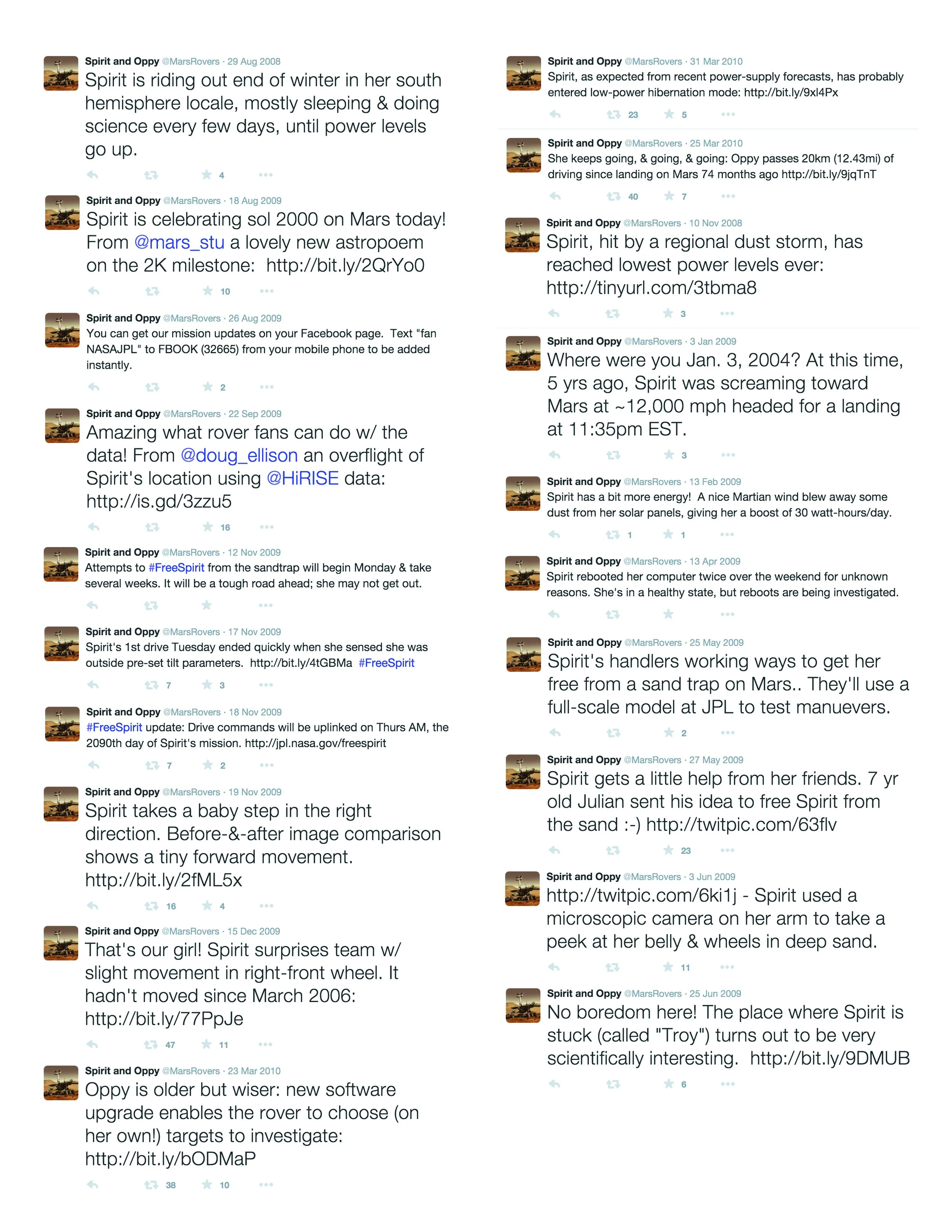1h 2m
| Case Study |
1h 2m surveys deeply rooted anthropomorphisms and emotional connections between NASA engineers and space robotics. It highlights the Mars landings of Lander Pathfinder 1997 and Rover Spirit 2004 through the representation of sound waves and screen grabs of the landing’s televised broadcasts.
-
CATEGORIES
+ Publication Design
+ Design Research -
METHODS
+ 1:1 Interview
+ Design Thinking
+ Field Studies -
TIMELINE
2015
Research – Discovery – Development
This case study explores whether NASA’s Jet Propulsion Lab engineers and scientists view spacecrafts as mere hardware or if they in fact are anthropomorphized through years of invested energy, effort, and emotional attachment from their conception as initial sketches to landing on Mars. The high level research surveyed in this study is as follow:
+ Robotics Anthropomorphism
+ Mechanisms Personalities & Behaviors
+ Rover Birth, Life, and Death
+ Grief and Loss
Field Studies @ The Mars Yard
Located in La Cañada Flintridge, California, JPL’s “Mars Yard” is in essense a simulated Martian landscape primarily utilized by the research and flight project teams to field test various robotic prototypes – see what works and what doesn’t – and make iterative adjustments towards a Mars ready rover.
1:1 Interview
While conducting field research of Jet Propulsion Lab, I discovered that Chief Technologist, Greg Davis, PhD, had been an integral contributor in the Rover Spirit’s mechanical system.
I reached out to Greg in order to gain first hand insights from a technologist who had hands on experience with the robotics themselves. Through this interview I discovered the deeply rooted anthropomorphisms and emotional connections between NASA engineers and space robotics.
+ sampling of the semi-structured interview I conducted with Greg
Process + Iteration
Beyond exploring immersive fieldwork and interviewing NASA experts, I additionally looked to both past and present secondary forms of research in an effort to widen my scope and understanding.
Particularly focusing on how each landing was being translated within society via broadcast television coverage from the late 1990s and early 2000s, while considering in tandem the cultural reflections and reactions of the space robotics via Twitter during the late 2000s.
Throughout this process, I am became very interested in pursuing how to tangibly articulate my findings, specifically, the audio from the broadcasts into a physical modality.
+ Still frames from CNN’s televised broadcast of the 1997 Lander Pathfinder Mars Landing
+ Twitter account created by a Rover fan that documented Rover Spirit’s time on Mars. Many tweets shared status updates to general public while simultaneously expressing anthropomorphisms and assigning the rover a female gender.
+ Meticulously watching and rewatching both rover landing broadcasts, documenting each landing’s story arch such as rising action and climax while observing the behavioral cues from the Jet Propulsion Lab’s staff.
+ Sound waves from both the Pathfinder (red) and Spirit (blue) Mars missions. Sound waves translated from televised broadcasted live from the Mission Control room.
+ Lander Pathfinder Process
+ Rover Spirit Process




















